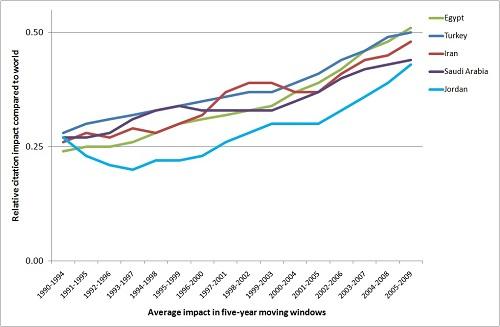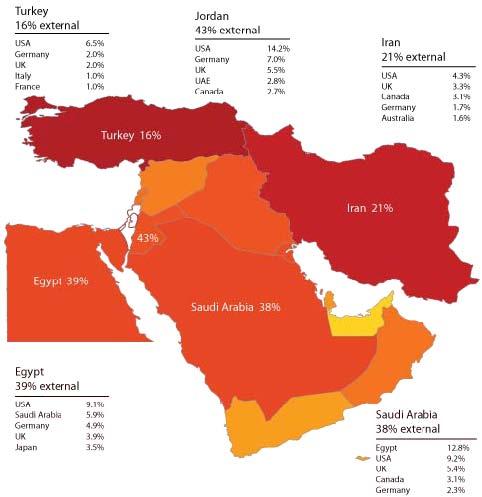Special Issue: Water Narratives
24 December 2025
Published online 9 March 2011
The Arabian, Persian and Turkish Middle East has doubled its share of scientific research in the last decade, from less than 2% to more than 4% of global output, according to a new report by Thomson Reuters that tracks the latest trends in scientific output across the region.
Turkey and Iran made the most gains. Turkey's output rose from 5,000 papers in 2000 to nearly 22,000 in 2009, almost trebling from 0.7% to 1.9%. Meanwhile, Iran's productivity in research papers jumped from 0.2% to 1.3%.
The report analyses the number of research papers published as a metric for scientific output. Over the last ten years, Thomson Reuters estimates the quantity of papers published worldwide has increased from around 760,000 papers to over 1,160,000, with the Middle East's share more than doubling during this period.
The 14 nations included in the report: Turkey, Iran, Egypt, Saudi Arabia, Jordan, Bahrain, Kuwait, Lebanon, Iraq, Oman, Qatar, Syria, United Arab Emirates and Yemen are a diverse mix of size and wealth. The first five states account for more than 90% of the Middle East's total research output.

There are some encouraging signs. Not only is the quantity increasing, but the quality of the research is improving too. The report uses the industry standard 'citation impact', which is a measure of the impact of research as the number of times a research paper is cited in another referenced article.
In the early 1990s, research in Egypt, Turkey, Iran, Saudi Arabia and Jordan had an impact of one-quarter the world average, but by last year this had risen to almost one-half.
Highly cited papers are those that rank in the top 1% in terms of citations per paper in their science subject. In mathematics, Egypt and Saudi Arabia perform better than the world average and Turkey, Iran, and Jordan also score relatively well in mathematics and engineering (see figure 1).
Overall, the region's share of total world output reveals that engineering is the strongest sector with a 5.4% share of research papers followed by agricultural sciences (5.1%) and clinical medicine (4.4%). Neuroscience and the social sciences are the weakest, the region accounts for only 2.0% and 1.9%, respectively. However, social sciences are growing at the fastest rate across the countries reviewed.

In general, the level of collaboration is lower than other parts of the world. About 40% of science papers authored by Egyptian, Jordanian or Saudi Arabian scientists have an international co-author, who are most likely to be based in the United States, Germany or the United Kingdom.
Within the region, Saudi Arabia and Egypt are the closest partners, with 12.8% of papers with a Saudi Arabian author published with an Egyptian, closely followed by researchers in the United State (9.2% of papers). Jordan is the most collaborative in the region with 43% of its research papers involving an international author with 14.2 % based in the United States (see figure 2).
Iran and Turkey are more isolated, with only 16% and 21% of papers, respectively, with an external partner. The most frequent co-author for an Iranian researcher is in the United States (4.3% of papers), followed by the United Kingdom. No Middle Eastern country is ranked in the top five of its partners.
Smaller countries including Syria, Yemen, Oman and Qatar have less international links, and addressing this, the report suggests, could be a way for science in these countries to develop.
In a foreword to the report, Ahmed Zewail, the Egyptian 1999 Chemistry Nobel laureate, contends a multi-pronged approach for developing science in the region: improve education including increasing the participation of women; minimizing the bureaucracy; and creating a merit–based system alongside a credible legal system.
doi:10.1038/nmiddleeast.2011.29
Stay connected: